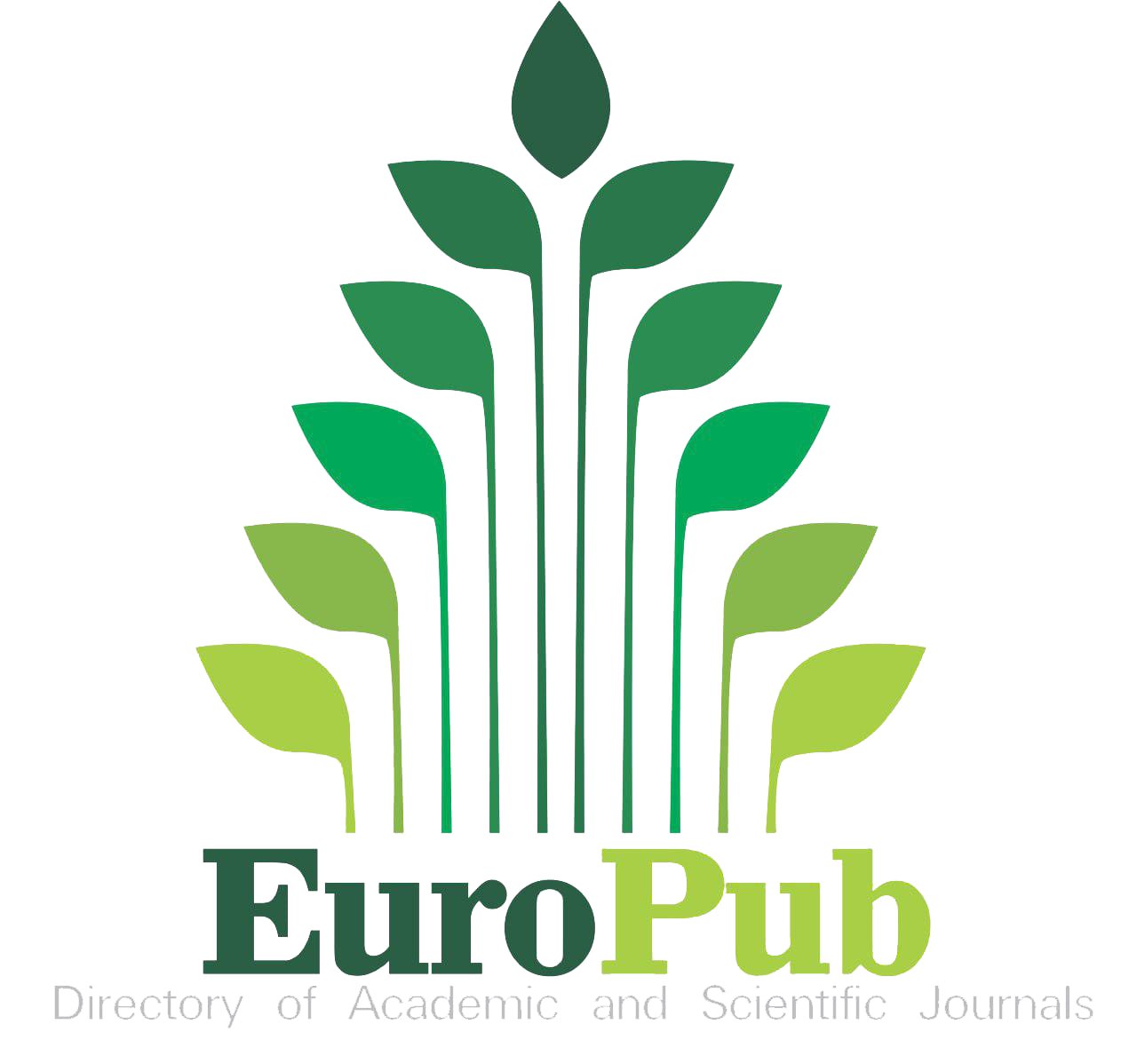Abstract
In human culture, machine learning has long been used to address complicated issues. Machine learning is successful because of the help provided by computational power and sensing technology. Data-driven strategies and the development of artificial intelligence will soon have a significant impact on the industry. Common examples include search engines, picture recognition, biometrics, speech and handwriting recognition, natural language processing, as well as medical diagnostics and credit scores. It is obvious that when artificial intelligence permeates our globe and, more precisely, our lives, numerous challenges will become public. According to predictions, Industry 4.0 or Smart Manufacturing will be the next Industrial Revolution. It all has to do with technology connectivity and improvements in the contextualization of data, as with many other advancements in recent years. Smart, however, cannot be realised without either the support of intelligent systems or the support of data science technologies.
Recommended Citation
Kumar, Manish; Pandey, Shanu; upadhyay, kanchan; Taunk, Pritibala; and Tamrakar, Raunak Kumar
(2022)
"RECENT TECHNICAL BREAKTHROUGHS ENABLE SMART MANUFACTURING: A REVIEW,"
Al-Bahir: Vol. 1:
Iss.
2, Article 3.
Available at: https://doi.org/10.55810/2313-0083.1010
References
- Burns, editor. Tech target IOT agenda; 2019. https://www.techtarget.com/iotagenda/definition/smart-manufacturing-SM.
- Chen Mu-Yen, Edwin David Lughofer& Erol Egrioglu. Deep learning and intelligent system towards smart manufacturing. Enterprise Inf Syst 2022;16(No. 2):189e92.
- Chen M. The Influence of Big Data Analysis of Intelligent Manufacturing under Machine Learning on Start-ups Enterprise. Enterprise Inf Syst 2019:1e16.
- Liu Z, Pu J. Analysis and Research on Intelligent Manufacturing Medical Product Design and Intelligent Hospital System Dynamics Based on Machine Learning under Big Data. Enterprise Inf Syst 2019:1e15.
- Su Y, Han L, Wang H, Wang J. The Workshop Scheduling Problems Based on Data Mining and Particle Swarm Optimisation Algorithm in Machine Learning Areas. Enterprise Inf Syst 2019:1e16.
- Ke G, Chen R-S, Chen Y-C, Wang S, Zhang X. Using ant colony optimisation for improving the execution of material requirements planning for smart manufacturing. Enterpr Inform Syst; 2020.
- Sun K. Analysis of Production and Organisational Management Efficiency of Chinese Family Intelligent Manufacturing Enterprises Based on IoT and Machine Earning Technology. Enterprise Inf Syst 2020:1e15.
- Zhang D, Dongru H, Kang L, Zhang W. The Generative Adversarial Networks and Its Application inMachine Vision. Enterprise Inf Syst 2019:1e21.
- Akhter MP, Jiangbin Z, Naqvi IR, Abdelmajeed M, Fayyaz M. Exploring Deep Learning Approaches for Urdu Text Classification in Product Manufacturing. Enterprise Inf Syst 2020:1e26.
- Sun L, Shi H, Bai M. Intelligent Oil Well Identification Modelling Based on Deep Learning and Neural Network. Enterprise Inf Syst 2020:1e15.
- Da Xu L. Enterprise integration and information architecture: a systems perspective on industrial information integration. 2014.
- Xu L, Cai L, Zhao S, Ge B. Editorial: Inaugural Issue. J Ind Integr Manag 2016;1:1601001.
- Chen C. Grand Challenges in Measuring and Characterizing Scholarly Impact. Front Res Metrics Anal 2016;1:2014e7.
- Kusiak A. Fundamentals of smart manufacturing: A multithread perspective. Annu Rev Control 2019;47:214e20.
- Sharma Ravi, BalazsVillanyi. Evaluation of corporate requirements for smart manufacturing systems using predictive analyticsvol. 19. Internet of Things; 2022. p. 100554.
- Frank A, Dalenogare L, Ayala N. Industry 4.0 technologies: implementation patterns in manufacturing companies. Int J Prod Econ 2019;210:15e26.
- Cohen Y, Naseraldin H, Chaudhuri A. Francesco P. Assembly systems in industry 4.0 era: a road map to understand assembly 4.0. Int J Adv Manuf Technol 2019;105:4037e54.
- Machado Carla Gonçalves, Winroth Mats Peter, Elias Hans Dener, Ribeiro da Silva. Sustainablemanufacturing in industry 4.0: an emerging research agenda. Int J Prod Res 2019;(2).
- Gazzola P, Del Campo A G, Onyango V. Going green vs going smart for sustainable development: Quo vadis? J Clean Prod 2019;214:881e92.
- ShanRena,ZhangYingfeng,LiuYang,TomohikoSakaoDonald Huisingh, Cecilia M, Almeida VB. A comprehensive review of big data throughout product lifecycle to support sustainable smart manufacturing: a challenges and future research directions. J Clean Prod 2019;210:1343e65.
- Mourtzis Dimitris, Fotia Sophia, NikolettaBoli Pietro Pittaro. Product-service system (PSS) complexity metrics within mass customization and industry 4.0 environment. Int J Adv Manuf Technol 2018;2:1e13.
- Li Lianhui, Lei Bingbing, Mao Chunlei. Digital twin in smart manufacturing. J Indus Inform Integr 2022;26: 100289. https://doi.org/10.1016/j.jii.2021.100289
- Kusiak A. Fundamentals of smart manufacturing: A multithread perspective. Annu Rev Control 2019;47:214e20. https://doi.org/10.1016/j.arcontrol.2019.06.001
- Da Xu L. Enterprise integration and information architecture: a systems perspective on industrial information integration. 2014.
- Xu L, Cai L, Zhao S, Ge B. Editorial: Inaugural Issue. J Ind Integr Manag 2016;1:1601001. https://doi.org/10.1016/j.jiim.2016.05.001
- Chen C. Grand Challenges in Measuring and Characterizing Scholarly Impact. Front Res Metrics Anal 2016;1:2014e7. https://doi.org/10.3389/frma.2016.00007
- Chen Y. A survey on industrial information integration 2016e2019. J Ind Integr Manag 2020;5:33e163. https://doi.org/10.1016/j.jiim.2020.08.001
- Sheth Ananya, Kusiak Andrew. Resiliency of Smart Manufacturing Enterprises via Information Integration. J Indus Inform Integr 2022;28:100370. https://doi.org/10.1016/j.jii.2022.100370
- Brik B, Bettayeb B, Sahnoun M, Duval F. Towards Predicting System Disruption in Industry 4.0: Machine Learning-Based Approach. Procedia Comput Sci 2019;151:667e74.
- Nayak A, Reyes Levalle R, Lee S, Nof SY. Resource sharing in cyber-physicalsystems: modelling framework and case studies. Int J Prod Res 2016;54:6969e83.
- Rivera Torres PJ, Serrano Mercado EI, Llanes Santiago O, AnidoRifon L. Modeling preventive maintenance of manufacturing processes with probabilisticBoolean networks with interventions. J Intell Manuf 2018;29:1941e52.
- Siafara LC, Kholerdi HA, Bratukhin A, Taherinejad N, Wendt A, Jantsch A, Treytl A, Sauter T. SAMBA: A selfaware health monitoring architecture for distributed industrial systems. In: Proc. IECON 2017 - 43rd annu. Conf.IEEE Ind.Electron.Soc.Institute of Electrical and Electronics Engineers Inc.; 2017.p.3512e7.
- Lee J, Jin C, Bagheri B. Cyber physical systems for predictive production systems.Prod Eng 2017;11:155e65.
- Serrano-Ruiz Julio C, Mula Josefa, Poler Raúl.Development of a multidimensional conceptual model for job shop smartmanufacturing scheduling from the Industry 4.0 perspective.J Manuf Syst 2022;63:185e202.https://doi.org/10.1016/j.jmsy.2021.12.005
- Zhang Xianyu, Ming Xinguo, Bao Yuguang.A flexible smart manufacturing system in mass personalizationmanufacturing model based on multi-module-platform,multi-virtual-unit,and multi-production-line.Comput Ind Eng 2022;171:108379.https://doi.org/10.1016/j.cie.2022.e108379
















Indexed in: